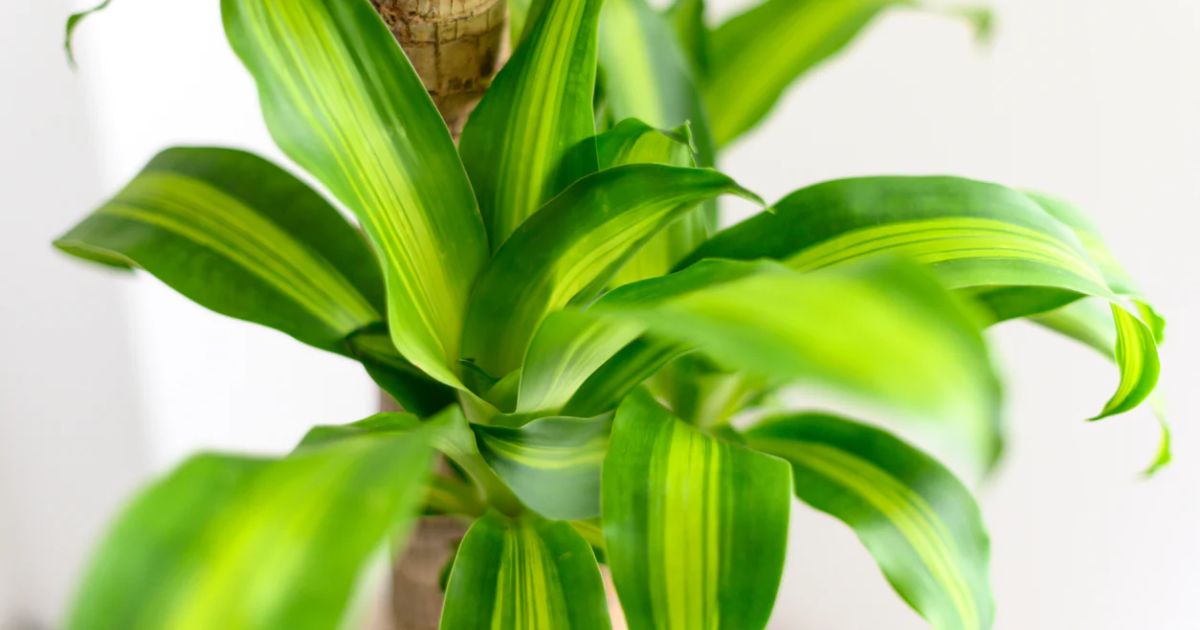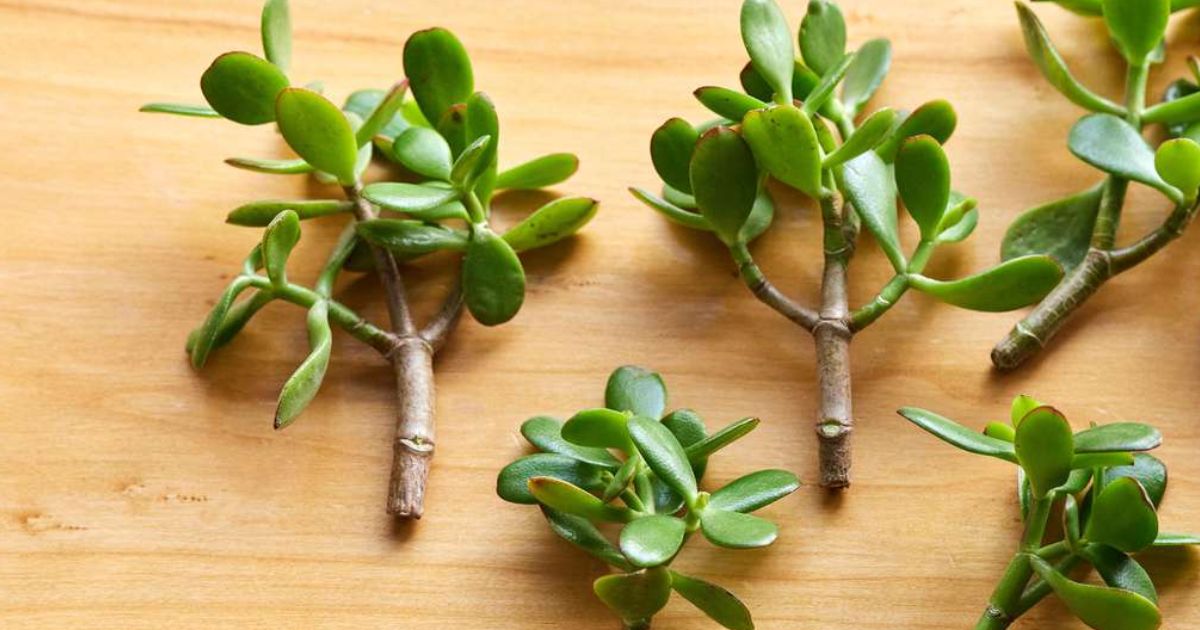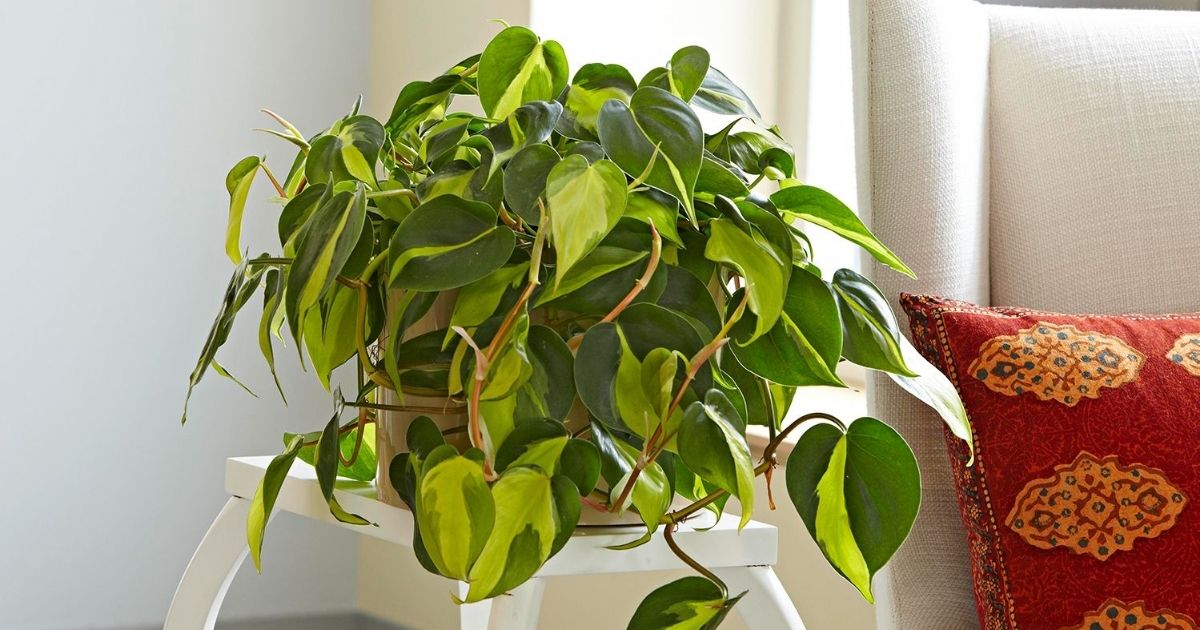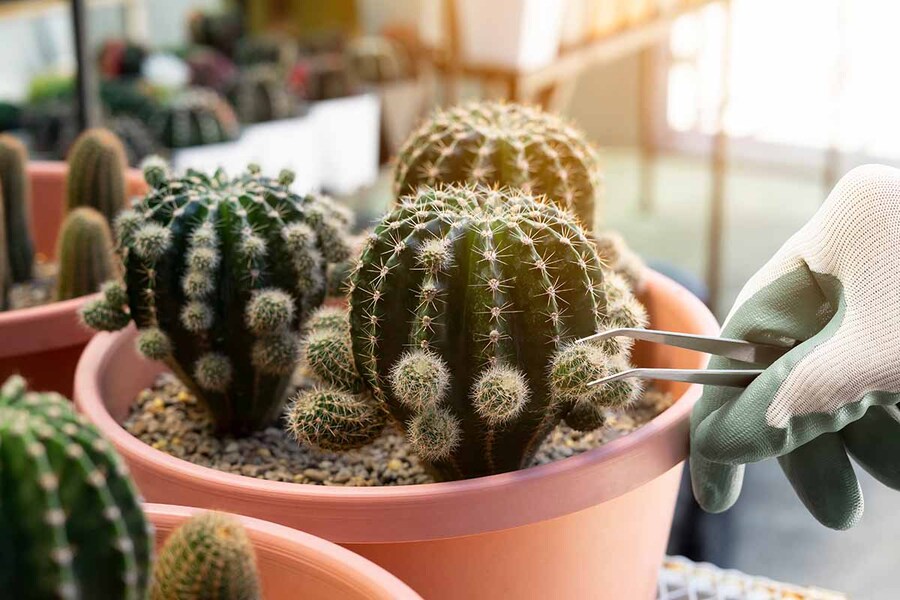Deep Water Culture: What Is It & How To Build A DWC System?
If you're new to growing plants hydroponically, "Deep Water Culture" sounds like a science-fiction movement. But it's not!
Deep water culture (DWC) is actually a hydroponic method of plant production that suspends the plant roots in a solution of nutrient-rich, oxygenated water. It will still outperform soil-based and hand-watered gardening methods.
Even though the concept is simple, there are various ways to use and build the deep water culture using different materials. Let’s get into the details.
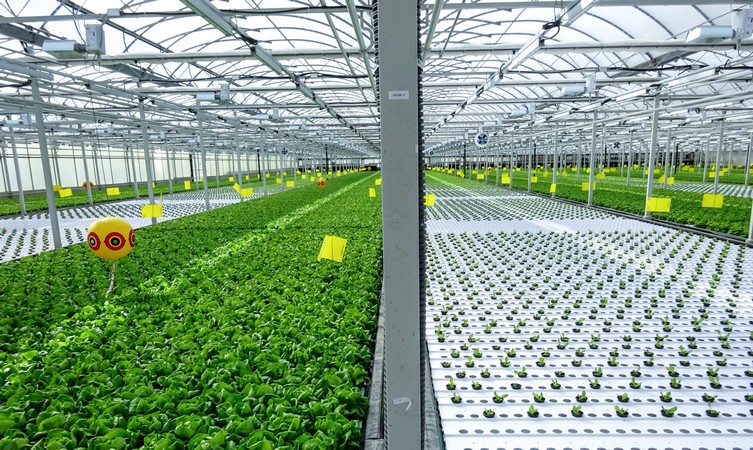
What Is Deep Water Culture (DWC)?
DWC hydroponics - Deep Water Culture - is a hydroponic growth system that always keeps plant roots in a well-oxygenated, nutrient-rich solution.
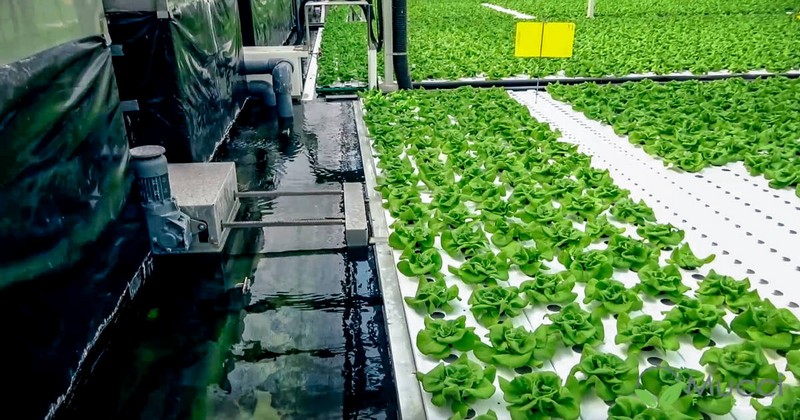
"Deep" means the roots must be submerged deeply in the water.
The reservoir that contains the plants must hold a suitable amount of water. The more water leads to, the more stable the nutrient solution is, and the less maintenance and monitoring you need.
In deep water hydroponics, growers submerge plants directly in continuously oxygenated water.
See more: hydroponics vs aeroponics
How Does DWC Work?
Let's illustrate the natural process via the image below.
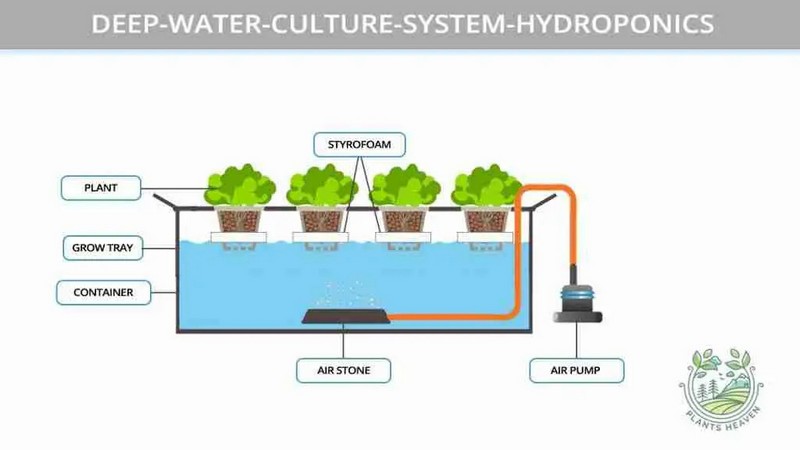
- An airstone connected with the air pump through the airline is placed in the reservoir.
- Nutrients and water are provided to it.
- The plants are put in net pots above the nutrient solution in the reservoir.
A net pot looks like a reusable and rigid plastic mesh cup. This mesh allows your plants to have a strong root system. If you grow in a normal cup with a hole in the bottom, the root will grow in just one direction.
But with a net pot, you can have roots from all different areas of your net pot, which ideally creates and promotes a vigorous root system. Once your roots receive the nutrient solution, you will see substantial growth.

Nutrient Solution
With this system, your plant roots no longer have to search for water pockets in the soil. Instead, they can immediately absorb the necessary nutrients and water. The plant roots can remain submerged deep for the entire plant life cycle without suffocating, as long as the water is properly oxygenated.
The roots obtain air and oxygen from the bubbles rising through the nutrient solution and dissolved oxygen in the water.
Benefits Of Deep Water Culture
DWC is popular for many reasons. The primary one is that it is easy to implement, even much simpler than a wick hydroponic system.
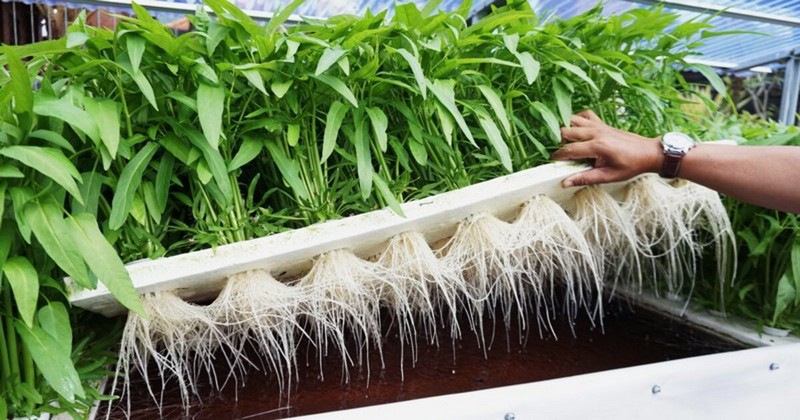
Here are some highlighted benefits of growing in a DWC system:
- Superior nutrient and oxygen uptake leads to faster growth. For example, lettuce can be harvested in 30 days instead of 60 in soil.
- Aerating the roots improves plants' absorption and increases cell growth rate within the plants.
- Once you are done, it only needs a little maintenance throughout the years.
Downsides Of Deep Water Culture
However, every coin has two sides. Similar to other hydroponics systems, some issues with this type of system can pose many problems.
- If the air pump gets broken, you have to replace it immediately. The plants will rapidly die if the air pump doesn't work long.
- Suppose you are using a non-recirculating deep water hydroponics system. In that case, it is hard to maintain the temperature – the water will be too hot from the submersible pump running continuously.
- Water level, PH, and nutrient concentration may fluctuate significantly in small systems.
- If there is a failure in an electricity outage or a pump, the plant roots can drown in a low-oxygen nutrient solution.
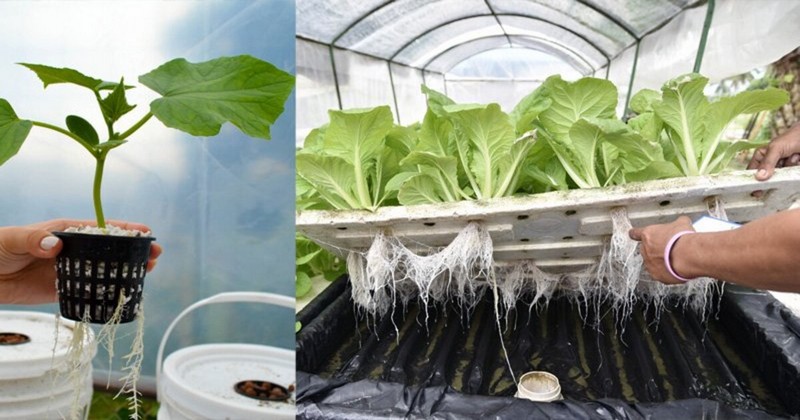
How To Set Up A Deep Water Culture System
Among many types of hydroponic systems, creating a DIY hydroponic DWC is quite easy and can be done using a few materials. These materials include a:
- 3 ½ gallon (13 L.) bucket
- 10-inch (25 cm.) net pot
- air tubing, an air pump
- an air stone
- Some rock wool, some expanding clay growing medium, or other growing media you choose.
These items can be purchased online at your Benchmark Hydroponics with ensured high-quality.
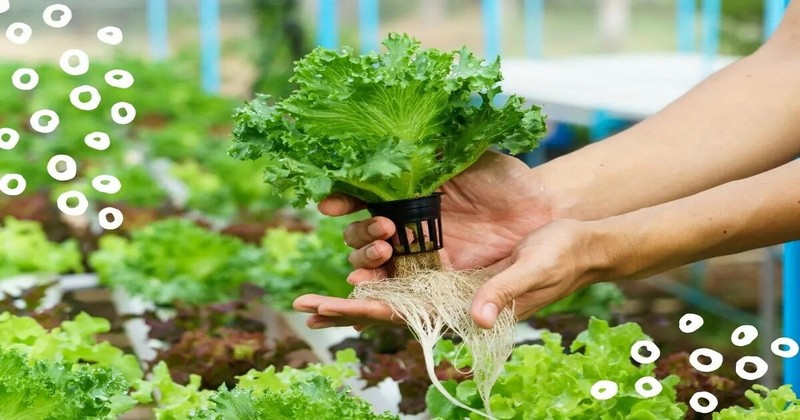
First, fill the bucket (reservoir) with the hydroponic nutrient solution above the net pot's base. Connect the air tubing to the airstone and place it in the bucket.
Place your plant, which has visible roots from the rock wool, into the net pot. Surround the plant with your growing medium or expanded clay pellets. Turn on the air pump (image below).
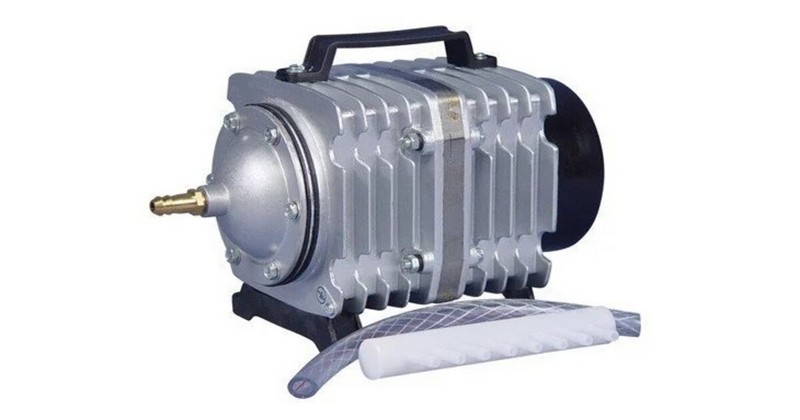
When the plant is still young, the rockwool must come into contact with a nutrient solution to wick the nutrients and water up to the plant. The root system will grow when the plant matures, and the nutrient solution level can be reduced accordingly.
Remove the plant from the bucket, replace and refresh the hydroponic nutrient solution, and then move the plant back into the bucket every 2 weeks. Meanwhile, you can provide more buckets to the system to grow more plants.
However, if you add many buckets, you may need to upgrade the air pump or add more air pumps to ensure enough oxygen is supplied to the plants.
See more: NFT system
Deep Water Culture Variations
Besides the traditional Deep Water Culture method mentioned above, there are some other variations of this system that you need to know.
Bubbleponics
Bubbleponics is similar to DWC hydroponics regarding setup and equipment, including an air pump and airstone. However, Bubbleponics is an upgraded version that involves adding a water pump to the reservoir.
This pump helps move the nutrient solution to the top of net cups that hold the plants, which then fall back into the reservoir. Thus, Bubbleponics is both a top-feeding DWC and a recirculating system.
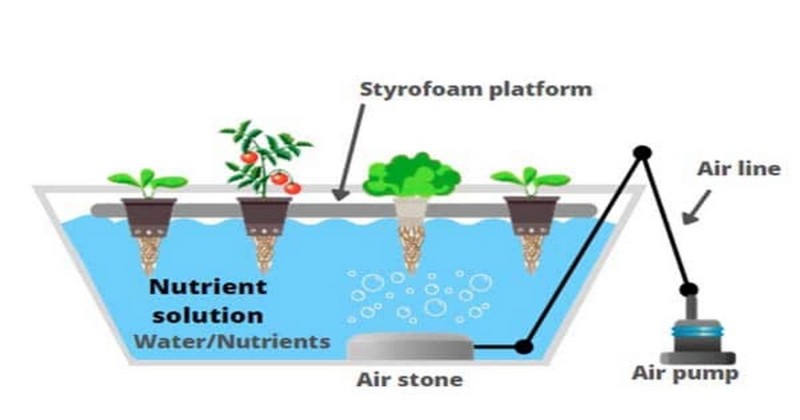
Bubbleponics is particularly useful during the initial phase of plant growth when the roots are short and cannot reach the water below. The roots can grow faster by providing nutrients and water at this stage.
However, once the roots reach the reservoir's nutrient solution, there is no longer an advantage to using Bubbleponics. However, Bubbleponics can still be valuable as it speeds up crops' seedling and germination phases.
See more: Flood and Drain
The Kratky Method
The Kratky Method is an alternative version of the Deep Water Culture hydroponics system that doesn't require a pump. It's a passive system that doesn't use electricity.
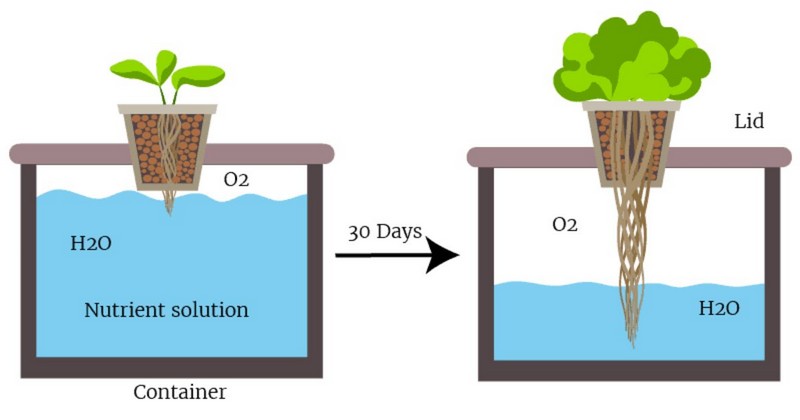
But, you might wonder how the plants get the necessary nutrients and oxygen. The answer is the air gap between the roots and the surface of the nutrient solution.
This means some parts of the plant roots are submerged in the water while others are exposed to the air. This allows the plants to obtain the nutrients they need from the water and the oxygen they need from the air.
Recirculating Deep Water Culture (RDWC)
However, the traditional DWC hydroponics system has limitations when scaling up. The RDWC system is developed to address this issue. It functions like a flood and drain system. However, the nutrient solution never drains or gets out of the system.
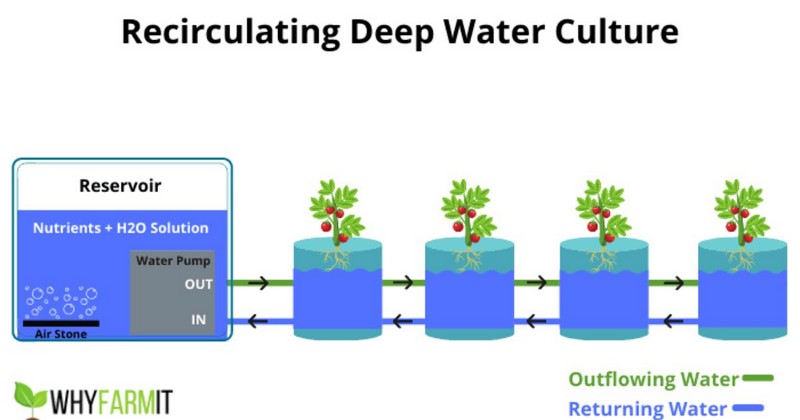
In this system, you must connect several containers or buckets to a central reservoir. You can scale the system per your requirements and only add water, oxygenate, and calibrate the central reservoir. The water and nutrients that nurture your plants move from one bucket to another in a circulated way.
Growing only one to three plants per bucket is recommended as having more can cause roots to clog the air stone and less oxygen for plants to absorb.
3 Tips for Deep Water Culture Hydroponics
Here are some notices to remember when using the deep water culture hydroponics method.
- Avoid exposing the plant's roots to high nutrient concentrations to prevent a lockout.
- Have a plan in case of power loss, as DWC systems need constant electricity to run the air pump.
- If power loss does happen to expose more roots to oxygen, drop the water level halfway in the reservoir.
- Plan for water changes and add a drain system to remove water from the reservoir to prevent crushing the plant's roots.
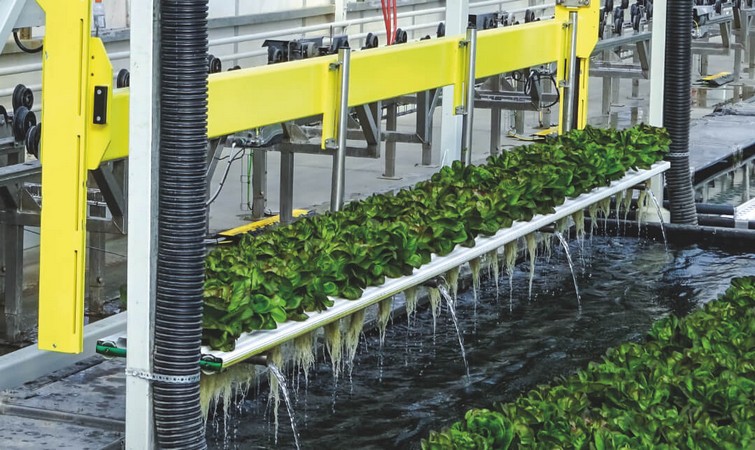
Frequently Asked Questions
Is Deep Water Culture Good?
Yes! Most plants grown in these systems perform well at pH 5.5 to 6.2. DWC can be a great way to grow crops. This publication gives a general overview of DWC hydroponics. However, potential growers should investigate specific options for their unique situation.
What Is The Difference Between Hydroponics And DWC?
Hydroponics is how you grow plants without soil using nutrient solutions in aerated water. DWC is one of the methods for growing plants hydroponically.
What Grows Best In Deep Water Culture?
Occasionally, fruiting crops such as strawberries, peppers, tomatoes, and cucumbers are grown in these systems. However, low-growing, leafy greens and culinary herbs are often grown in DWC hydroponics. Various types of lettuce work well in a DWC system, such as butterhead, romaine, oakleaf, and multi-leaf.
Bottom line
A deep water culture system (DWC hydroponics) is the practice of growing hydroponic plants in aerated water. Many growers regard this system as the purest and simplest form of hydroponics.
Suppose you are a beginner in growing plants using the hydroponics method. In that case, this is a cheap (compared to other choices) and basic DIY setup that beginners and more advanced growers both appreciate.
